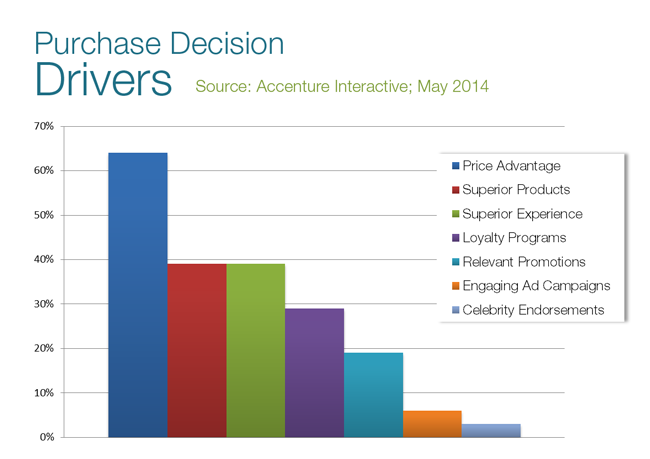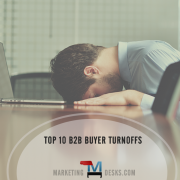7 Factors that Influence Buying Decisions with US Buyers
Before you lay out big bucks to land a celebrity endorser or a lot of time trying come up with the perfect marketing campaign to influence buying decisions, make sure you know which factors consumers say make them more likely to buy.
What You Could Do to Influence More Buying Decisions
New data from Accenture shows which of seven factors are most likely to get U.S. consumers to pull the trigger and complete a purchase. It might surprise you to know that engaging marketing barely makes the list.
B2B and retail marketers spend a lot of time and resources trying to come up with their own “Got Milk” type of viral advertising campaign and brands lay out lots of money for celebrity endorsements. As it turns out, those are two of the least influential triggers among 20-40 year old U.S. consumers when it comes to buying decisions.
You might also like: Trust Trumps Value in Top B2B Buyer Considerations + Infographic
A new report released by Accenture Interactive in May 2014 points to seven key factors that influence buying decisions as ranked by U.S. buyers in order of importance.

7 Factors that Influence Buying Decisions with US Buyers
1 Selling or price advantages – 64%
Not surprisingly, U.S. consumers are more likely to pull the trigger when they feel like they are getting the best value for the amount of money they will be spending. This does not always mean they are getting the lowest price; however, as products or services will more bells and whistles might cost more than less tricked-out alternatives but still represent the best value for the buyer.
Selling and price advantages aren’t just about being competitor’s alternatives, either. You could get buyers who have been on the fence to take action if you give them advance warning prior to a price increase or a change in the options that will be included in the sale of products or services.
2|3 (Tie) Superior products and buyer experiences – 39%
It’s interesting that for U.S. buyers aged 20-40, a better buying experience could be just as influential to buying decisions as is the quality of the purchased goods or services themselves. This may point to an underlying buyer assumption that when comparing apples to apples, quality of products will not vary greatly.
Given an expectation in products or services that are roughly on par with those of competitors, sellers can gain a real competitive advantage by stocking not the shelves but the customer journey with moments of lasting impression that buyers will desire to repeat or be likely to talk about with peers, friends or family.
4 Loyalty programs – 29%
With U.S. buyers aged 20-40, it’s not just about what they get now when they make a purchase, it’s also about what they might be earning toward the future. Allowing buyers to tailor their own rewards programs or designing an interactive loyalty app could further engage these buyers and encourage them to make future purchases as well.
5 Relevant promotions – 19%
Relevancy could come in many forms. Anticipated price increases, discounts, personalized add-ons and accessories and other options which are meaningful to buyers could get them off the fence and on the side of your brand.
6 Engaging advertising campaigns – 6%
Many people think marketing and advertising happens behind closed doors as creatives throw ideas and images up on whiteboards hoping to come up with that one magic “Got Milk” type of viral ad campaign to launch their organization to the top of the heap.
Let’s face it; consumers are bombarded with advertising to the point that even if a brilliant tag line crossed their path online, in a magazine, on TV or on a billboard, they would ignore it, flip the page, fast forward or drive right by anyway.
7 Celebrity endorsement – 3%
Often one of the most expensive marketing tactics, it turns out that celebrity endorsements don’t go very far with buyers. Just as savvy consumers increasingly overlook ads in favor of their own research, consumer reviews and peer recommendations, they are also likely to favor those factors above celebrity endorsements.






